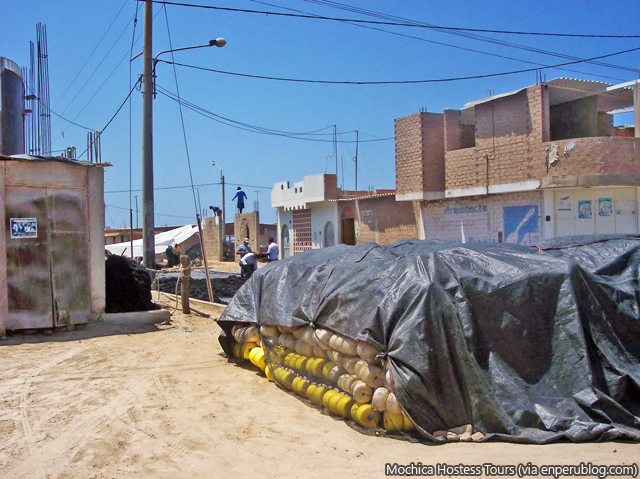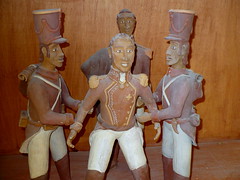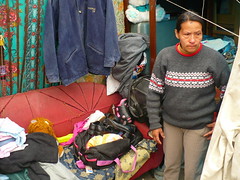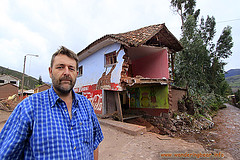Building boats in Santa Rosa, part 2
Tom Filipowicz in Chiclayo takes us back to the small town of Santa Rosa and its small shipyard. Read the first part here.
Article brought to you by Mochica Hostess Tours
After learning how a boat is made I became curious about how it’s used, so Maribel and I returned to Santa Rosa to see if we could find someone who would answer our questions. As usual we had no problem. There are always many people willing to help in any way possible, and if they don’t have all the answers they’ll take you to someone who does.

We didn’t have to go any further than Jacinto Bernal Castro, shown seated. He had been a fisherman for 30 years, early on saving his money in the hope of one day owning a boat. He more than met his goal – this boat is one of four Jacinto owns. He doesn’t fish anymore, preferring to call himself an administrator.

The boat is getting a major overhaul – in fact practically rebuilt. Everything but the hull has been replaced, including the steering cabin. It has a new prop and reconditioned 1000hp Catterpillar engine from Lima costing $55,000. The remaining hardware being replaced cost in the area of $5,000.

An item I asked about almost as an afterthought, thinking it not significant was the net. Under the tarp in this photo is one complete net, only half of which is shown. Jacinto called it a “bolichera” and in response to questions about its size said it is 250 x 30 “brazadas marinas”, a measurement that he indicated is the span from finger tip to finger tip of a man’s outstretched arms. Using an arbitrary 6’ for this measurement I came up with dimensions of 500 yards long (5 football fields) by 60 yards deep. The cost is a staggering $30,000.

Launching a boat is done with a machine owned by the fisherman’s association. This launch took about 30 minutes, with the balance of the time being spent in relocating the planks and logs that roll on them. This same machine pulls the boats out of the water. There was a festive atmosphere during this process. It seemed like half the town was on the beach watching two boats get launched and one pulled in. I wonder if that’s always the case or if this was something special?
As I understand it, once a boat is launched it doesn’t touch land again except for annual maintenance. It continuously travels to wherever the fish are; dropping off their catch daily at the nearest fish transport center and anchoring each night at the nearest port, where they will replenish whatever supplies are needed. Jacinto’s boat has a capacity for 40 tons of fish. Wherever they unload their catch, the fish ultimately find their way to Chimbote to be processed. Crew size is 10 to 12 and each has a specific job including the captain, cook, and mechanic, with the rest devoted to fishing tasks. I didn’t learn the mechanism or frequency for payment for the catch but did learn the boat owner gets 55% – the crew splits the rest based on their specific jobs.
According to Jacinto the average lifetime of a boat is 20 years, provided it is laid up for annual maintenance. We didn’t get into a discussion on the financial rewards of fishing. I wish we would have. Looks like another trip to Santa Rosa coming up.
If you’d like to experience events like this and get a taste of real daily life in northern provincial Peru, speak to Tom & Maribel via Mochica Hostess Tours
Tags: fishing




![English priest stops Amazon logging giants in their tracks [Featured]](http://farm5.static.flickr.com/4075/4755322252_e35e091a63_m.jpg)





